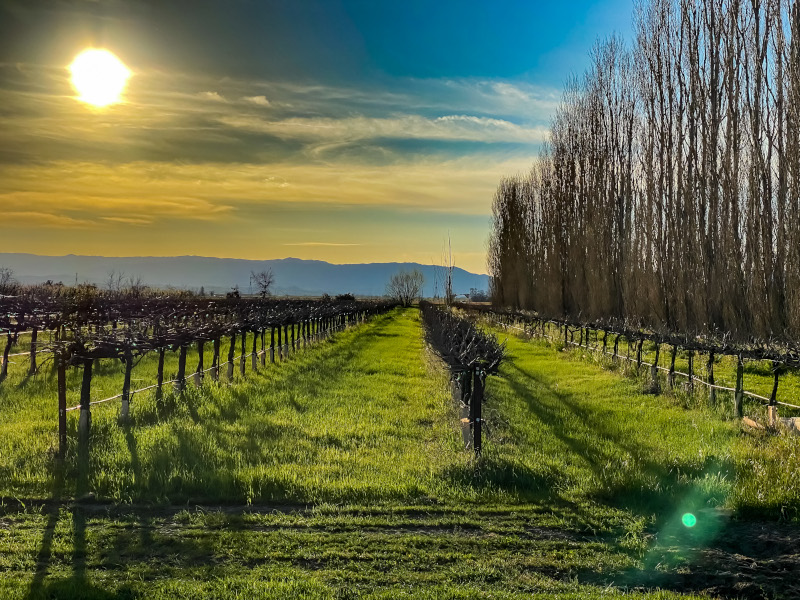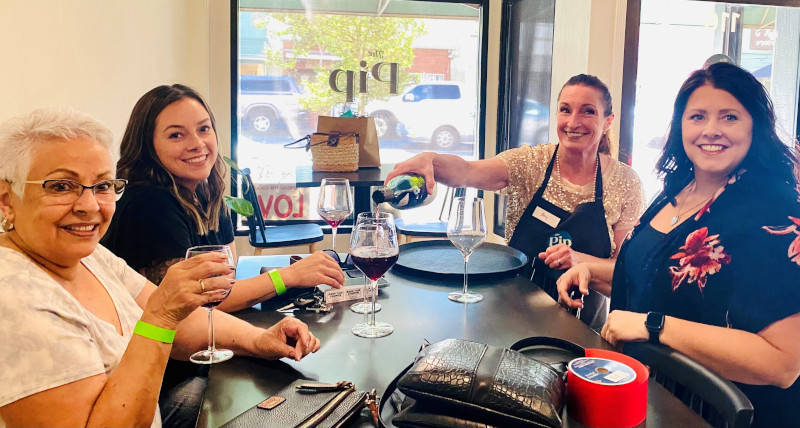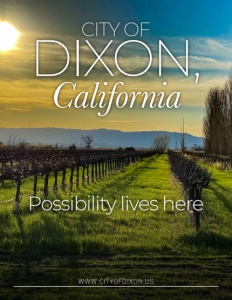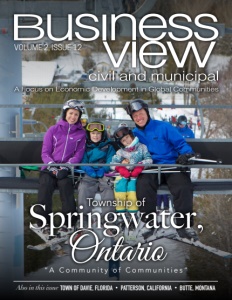City of Dixon, California
Possibility lives here
Business View Magazine interviews representatives of City of Dixon, California for our focus on Growth & Economic Development in U.S. Cities
Located 23 miles outside California’s capital of Sacramento is Dixon – a charming city full of potential. Its origins date back to the 1850s and California’s Gold Rush, when hopeful travellers came to find their fortunes. Those who stayed, established settlements like Silveyville, although its location was only semi-permanent until 1870 when the Vaca Valley and Clear Lake Railroad’s Solano County line was built. Since the train tracks didn’t travel through Silveyville, the residents relocated their entire community to Thomas Dickson’s land where tracks did cross.
The ambitious move even included the Dixon United Methodist Church, which still stands today and welcomes parishioners every Sunday. Dickson donated his land on the condition the town be named ‘Dicksonville’ after him. Unfortunately, after the first rail shipment was mislabelled as ‘Dixon,’ the simplified spelling stuck.
Today, almost 150 years later, the city is still going strong. “We’re at a very exciting growth point, lots of things are starting to happen,” reports Mayor Steve Bird. “When I moved here in 1988 to work with the Dixon Police Department, we had 9,000 residents. Now we’re over 20,000. Dixon was originally agricultural-based but, over the past 33 years, I’ve witnessed first-hand its gradual transition into a bedroom community and now more industry is coming in. We’re rare because we have a major Interstate, the I-80, running through our city. We’re perfectly positioned between Sacramento and the San Francisco Bay Area to have upwards of 130,000 vehicles driving through daily. Equally significant are the people commuting to work in other areas. They choose to live here.”

Image Courtesy Gary Erwin
Dixon’s Community Development Director, Raffi Boloyan, adds that this recent population growth doesn’t affect the “small-town feel.” The lush fruit orchards and vegetable farms surrounding Dixon enhance its atmosphere, while also acting as “buffers” between the more densely populated neighboring areas. Dixon’s Economic Development/Grants Manager, Larry Burkhardt, agrees, elaborating, “We have festivals here that have become traditions. They exemplify what our community has built over time. On the first Saturday in May, for the past 145 years, we’ve celebrated the Dixon May Fair. It’s the state’s oldest continuous agricultural fair and includes a two-hour parade showcasing our town. In the summer there’s the Grillin’ & Chillin’ Car & Truck Show & Rib Chili Cook Off. During Halloween, our downtown hosts trick-or-treaters and the sidewalks are overflowing. At Christmas, the Dixon Fire Department hands out hot chocolate during our Annual Tree Lighting Festival.”
Recently, there’s been a substantial migration out of the Bay Area. Residents are realizing they can sell their property for a premium, purchase a home in Dixon for a third of that cost, and lose the congestion by working remotely. It’s an advantageous situation from all sides. City Manager, Jim Lindley, observed a decade ago that Dixon was poised for growth in all areas – business, residential, and commercial. His first assignment was preparing the community for these opportunities. He notes, “After looking at infrastructure, the Dixon Wastewater Treatment Facility was built. This state-of-the-art wastewater facility manages the capacity we anticipated. We designed it to double that capacity as well; we’re almost there now.”
Solano County implements a land use policy preventing any rapid growth on county lands. All residential or commercial development must instead occur within city limits. As Lindley explains, “The county is agricultural. The only business development within county areas must be related somehow, like a lettuce packing plant or livestock processing facility. This allows us to better plan our futures.” It’s still challenging when a community like Dixon runs out of space after four years of rapid expansion. Developers are hoping to annex (expand) the city’s boundaries to allow future growth. Until then, existing developments continue, including Homestead – the approved residential subdivision of 1168 new single-family units with 274 being reserved for those 55 and older. Lindley believes this project will transform the community’s demographics significantly. Equally important is the 501,000-square-foot commercial facility underway. When finished, it will be Dixon’s, GE Appliances (a Haier company) distribution warehouse.
Burkhardt credits Dixon’s status as a bedroom community in securing the GE Appliances facility. He states, “Most residents work somewhere else. It means a new employer could have access to a ready-made workforce. Obviously, many people would prefer to work and live within the same community. That’s why we’re brainstorming developments to provide employers with opportunities to access our workforce.”
Coming up with these new ideas is easier alongside strong economic and workforce development partners. Burkhardt meets regularly with the Workforce Development Board (WBD) of Solano County and other economic development professionals who work directly with local businesses. The WBD and the Solano Community College have even collaborated on developing a biomanufacturing Baccalaureate program offered through the college. Biotechnology has become a burgeoning industry in the area since Genentech, a large bio manufacturing plant, is headquartered in nearby South San Francisco. Perhaps most importantly, is the community’s proximity to one of the world’s preeminent universities, the University of California, Davis (UC Davis). It offers a myriad of superior undergraduate, graduate, and professional school programs and is especially renowned for its Agricultural Technology programs specializing in agricultural R&D.

Image Courtesy Angela Meisenheimer
One of the most foundational areas of Dixon is its downtown core, where past, present, and future meet in one place. A perfect representation is the upcoming Pardi Market Plaza now in its final stages. Located at the main intersection of town, the new event space is named for the multi-generational Pardi family and will feature a plaque monument honoring them.
“Downtown is a particular asset, especially for entrepreneurial activity,” says Burkhardt. “We have quite a few women-owned businesses here. Bud’s Pub & Grill is a historic restaurant and a long-time community gathering place. The building was originally transplanted from Silveyville and has been revitalized by owners Cherie and Bud Fanning. Across the street is Dawson’s Bar & Grill, another local favorite eatery that has recently undergone extensive renovation by community leader Jill Orr. A couple of doors down is Rosemarys Farm-To-Fork restaurant established by Rose, who has quickly built a strong reputation for delicious meals made with organic and sustainable foods. Across the street is newly-opened PIP Wine Bar & Shop founded by Amy Grabish. Amy has 20 years of experience as a buyer in the business. Next door, Rebecca Robinson has opened a new consignment boutique called Uptown Collective, where shoppers can find those special gift items for all occasions. Around the corner is The Barn and Pantry owned by Lindsey Hickman. It’s a kitchen, market, and coffee shop. Classes are offered in bread making and food preservation that attract patrons from as far away as the Bay Area. Our exciting entrepreneurs are breathing new life into our Old Town. They join many long-term businesses like Every Baking Moment, where one can learn cake decorating from award-winning owner Janice Luzzo,; Linda Barrett’s real estate office; and Olympia Campos Garner’s insurance agency.”
Dixon’s parks and recreation opportunities also greatly add to the community’s quality of life. “Our parks system is pretty robust because we have high standards; we like parks,” says Boloyan. “We currently have 4.8 acres per 1,000 residents—existing and planned, which is higher than average. In our General Plan 2040 update, we increased our goal to five acres of parks per 1,000 people.” One of Dixon’s most beloved parks is Hall Memorial Park, which is home to the Pat Grannuci Aquatic Center. Dixon High School is conveniently located at the park’s opposite end, so it’s easy for the Dixon Boys Varsity Water Polo team to train in the pool. A note of pride, the Dixon High School Rugby Club won the 2012 Boys High School (HS) Rugby National Championship.
Mayor Bird adds, “A state-of-the-art soccer stadium equipped with FieldTurf Synthetic Grass has just been finished. We also have very woodsy and outdoorsy nature trails around one of our large retention ponds. Our location is everything. If you travel in any direction along the I-80 you’re going to find fun recreational activities. That’s one of the many things that make this city so wonderful – you’re never more than two hours away from something fantastic to do in our region.”
Looking ahead three to five years, Boloyan wants to further develop Dixon’s Northeast Quadrant so it can grow into an economic and industrial hub for the city, instead of remaining underdeveloped. He says, “I’d also like to revamp North 1st Street, the main corridor through town. Try to beautify that stretch by revitalizing the older structures, turning them into more useful commercial buildings or housing. It would be beneficial as well, to attract additional businesses like another supermarket.”
Burkhardt agrees that encouraging a more diverse business space would boost employment within the community, while adding more revenue opportunities. In addition, bringing more mixed-used developments combining living and working type spaces is essential. Lindley sums it up well, sharing, “In conjunction with UC Davis, we want to have good jobs in town. We want a sustainable economy. We already have a diverse economy and a developed community; we’re not just a big pile of houses. We want people bringing their families here. We’re focusing on growth while keeping that small-town feel. Dixon certainly has a bright future.”
AT A GLANCE
City of Dixon, California
What: A rapidly growing community; population in excess of 20,000
Where: Northern Solano County, California
Website: www.cityofdixon.us



